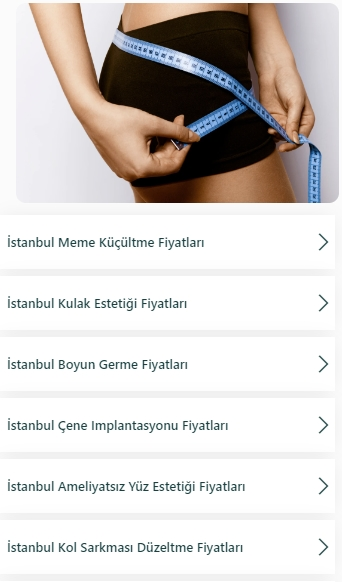
Current Treatment Methods for Hemorrhoidal Disease
- Current Treatment Methods for Hemorrhoidal Disease
- Classification of Hemorrhoidal Disease
- Diagnostic Approach
- Treatment Approaches
- Postoperative Period and Follow-Up
Commonly known as “piles” or “hemorrhoids,” hemorrhoidal disease arises when the vascular cushions in the lower part of the anal canal become enlarged and displaced. This condition typically presents with symptoms such as anal pain, bleeding, itching, discharge, and palpable swelling. It significantly affects patients' quality of life and work performance, and its diagnosis and treatment should be approached based on the latest medical literature.
Classification of Hemorrhoidal Disease
Hemorrhoids are divided into two types based on their anatomical location: internal and external.
- Internal hemorrhoids occur above the dentate line,
- External hemorrhoids occur below it.
Internal hemorrhoids are further classified into four grades:
- Grade 1: Bleeding may occur, but there is no prolapse.
- Grade 2: Prolapse during defecation but spontaneously reduces.
- Grade 3: Prolapse requires manual reduction.
- Grade 4: Irreducible prolapse, often accompanied by complications.
Diagnostic Approach
Diagnosis begins with a detailed medical history. Symptoms such as rectal bleeding, changes in bowel habits, pain, and itching are evaluated. A physical examination and anoscopy are then performed. In some cases, advanced imaging techniques like colonoscopy may be necessary—especially in patients over the age of 50 or those presenting with bleeding—to rule out serious conditions such as colorectal cancer.

Treatment Approaches
Treatment is personalized based on the stage of the disease, symptom severity, and the patient’s overall health status. Today, both medical and surgical treatment options are available. Medical treatment is usually the first step.
1. Medical (Conservative) Treatment
For Grade 1 and 2 hemorrhoids, the first-line approach includes lifestyle modifications and medication:
- Dietary changes: A high-fiber diet, increased fluid intake, and regular bowel habits. Avoid spicy foods.
- Toilet habits: Establishing routine defecation times. Avoid straining and activities like using a phone or reading while on the toilet.
- Medications: Topical corticosteroid creams, anesthetic ointments, and oral medications like venotonics.
- Warm sitz baths: Soaking the anal area in warm water for 10–15 minutes, 2–3 times daily.
Many patients show improvement with these measures. However, in recurring cases or more advanced stages, invasive procedures may be necessary.
2. Minimally Invasive Procedures
These are ideal for patients not responding to medical treatment or those with Grade 2 or 3 hemorrhoids. These methods are generally painless and promote rapid recovery:
- Rubber Band Ligation (RBL): A rubber band is placed at the base of the internal hemorrhoid, cutting off its blood supply. The tissue necroses and falls off within 7–10 days.
- Sclerotherapy: Injection of a sclerosing agent into the hemorrhoid causes the vessel to shrink. Particularly advantageous in elderly patients or those on blood thinners.
- Laser Ablation, Infrared Coagulation, and Bipolar Diathermy: These use heat energy to coagulate hemorrhoidal vessels. Suitable for Grades 1, 2, and in some cases, 3.
Laser therapy has gained popularity in recent years due to its low complication and pain rates.
3. Surgical Treatment Options
Surgical intervention is recommended for Grades 3 and 4, thrombosed external hemorrhoids, or cases resistant to other treatments. Modern surgical options include:
- Conventional Hemorrhoidectomy (Milligan-Morgan, Ferguson techniques): The most radical approach involving complete removal of hemorrhoidal tissue. Though recovery takes longer and pain is higher, recurrence is less common. However, complication risk is also higher.
- Stapled Hemorrhoidopexy (Longo Technique): Instead of removing tissue, the internal hemorrhoid is repositioned upward and blood flow is reduced. Less painful but carries specific risks (e.g., stenosis). Ideal for advanced prolapsing hemorrhoids.
- THD (Transanal Hemorrhoidal Dearterialization): A modern technique involving Doppler-guided ligation of hemorrhoidal arteries to reduce blood flow and shrink the tissue. It’s minimally invasive and causes minimal discomfort.
Postoperative Period and Follow-Up
As with any surgery, hemorrhoid operations require careful postoperative monitoring. Regular follow-up visits are essential. Especially in the first weeks, patients should:
- Keep the wound area clean
- Use painkillers for pain control
- Maintain a high-fiber diet and drink plenty of water
- Use stool softeners if needed
- Adopt permanent lifestyle changes to prevent recurrence

Op. Dr. Levent Akgün Kazak
General Surgery Specialist

